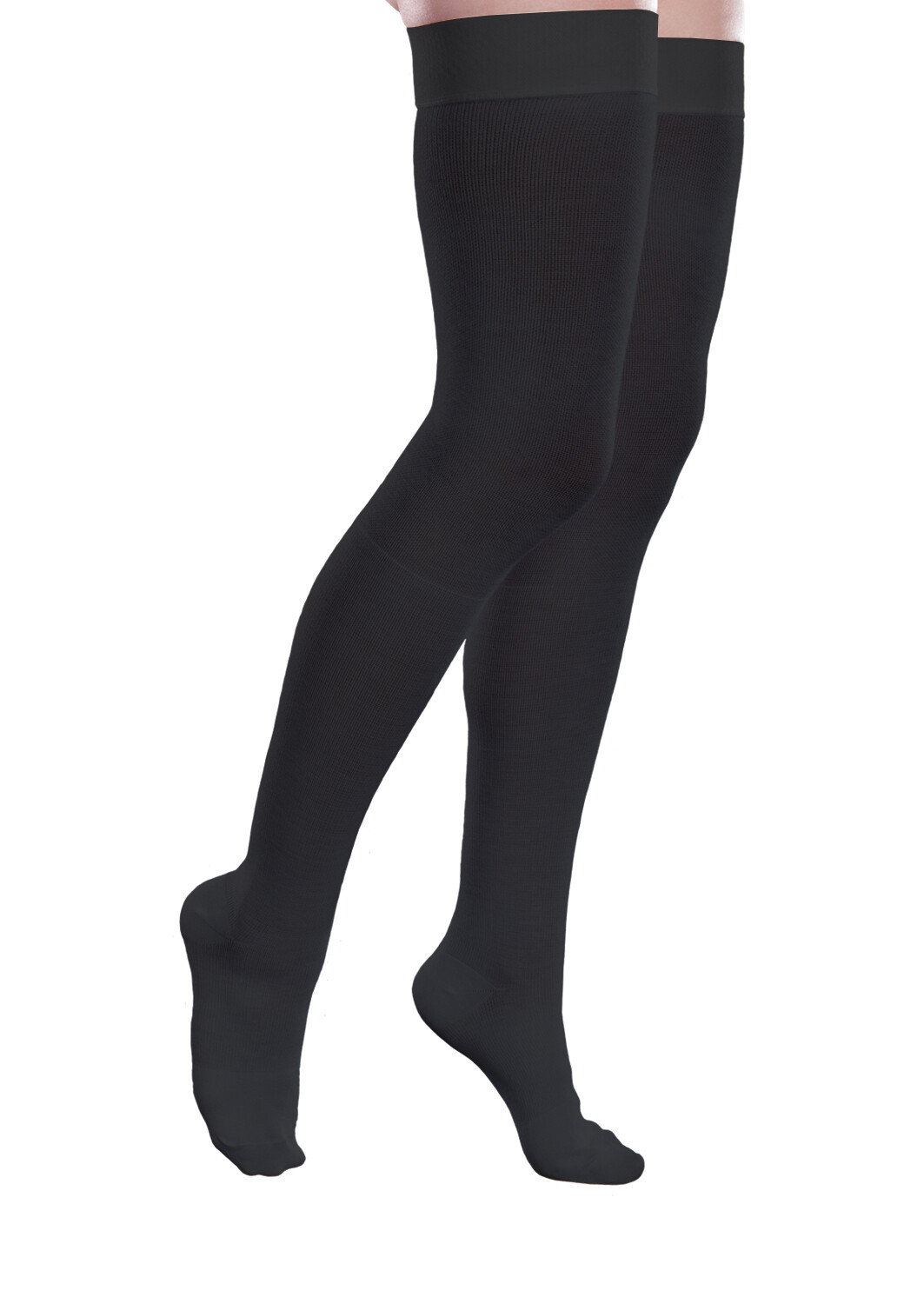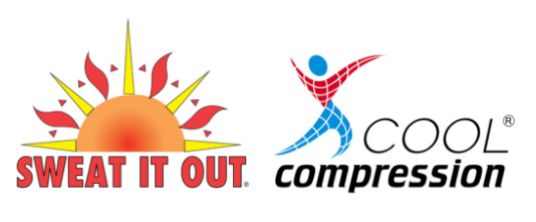Gradient Compression Socks Firm Support MID THIGH (30 - 40 mmHg)
Designed to improve circulation, relieve tired, heavy, aching legs, and prevent moderate swelling. Recommended for: moderate ankle and leg swelling, tired, achy legs or other conditions as recommended by your physician “Tired & achy legs” often is the complaint we hear from customers. Compression socks are designed to put pressure on the lower part of the legs to facilitate circulating blood up to the heart. Sitting or standing, whether on the job or flying for a long period of time will cause achy and tired legs. Compression socks will also help prevent and treat spider veins and varicose veins. THERAFIRM® created the most comfortable compression socks using the patented Micro-Cool® process which creates a wicking effect, so moisture evaporates from the skin quickly for healthy feet. Antimicrobial silver fibers wick moisture away from the skin and help prevent odor in the sock. CONTRAINDICATIONS: Compression products should not be worn and is contraindicated if you have any of the following conditions: Severe arterial insufficiency, cutaneous infections, acute dermatitis, wet dermatosis, uncontrolled congestive heart failure, skin irritations, allergies to dyes. NOT TO BE WORN WHILE SLEEPING. No Returns, No Exchanges.
Details
Core-Spun by Therafirm Firm Support Socks (30-40 mmHg)
Firm Support is Recommended for:
Moderate ankle and leg swelling, tired, achy legs or other conditions as recommended by your physician.
Core-Spun by Therafirm Firm Support Socks Feature
- 30-40 mmHg (the mean compression for an average ankle size).
- Ultra stretchy yarns make the sock easier to put on.
- Comfort designed top is non-restrictive while staying in place all day.
- Added thickness makes the sock more comfortable for all-day wear.
- Reinforced, comfortable heel and toe.
- LATEX-FREE fibers for soft, cool comfort.
Made in USA
Full calf style available in XL size to accommodate calf circumference up to 23”.
Care Instructions: Machine wash cold, tumble dry low. No bleach.
Size Chart:
Trademark THERAFIRM® is the property of Knit-Rite Corporation.
Trademark Micro-Cool® is the property of Knit-Rite Corporation.
Trademark CoreSpun® is the property of Knit-Rite Corporation.
Trademark SWEAT IT OUT® is the property of Lontex Corporation.
Trademark COOL COMPRESSION® is the property of Lontex Corporation.
Trademark COOLPOWER® is the property of Lontex Corporation.
LYCRA® is a trademark of The LYCRA Company.
Lontex Corporation
8 DeKalb Street
4th Floor
Norristown, PA 19401
Be the first to know
We will get back to you as soon as possible
Please try again later



